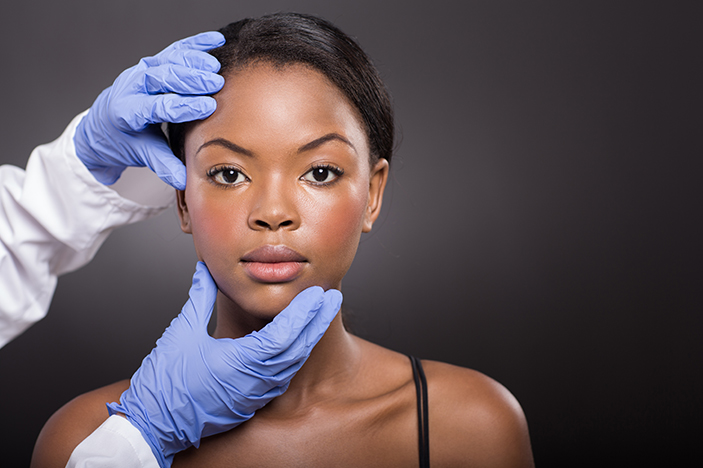
Do you have a rash? Know the difference between common conditions and when it could signal a more serious health concern.
Rashes are caused by exposure to any number of environmental allergens such as food, weather, sunlight and even stress.
Many of these can be treated effectively with over-the-counter medications. But in some cases, your skin may be telling you that you have a more serious condition.
“In dermatology, we treat a wide variety of rashes, from life-threatening to simply bothersome,” says Ashley B. Crew, MD, a dermatologist at Keck Medicine of USC and clinical associate professor of dermatology at the Keck School of Medicine of USC.
Because skin is the largest organ in the body, it can show signs of an internal disease before the disease shows typical symptoms.
When is a rash more than a rash?
A minor rash is easily treatable with antihistamines or hydrocortisone cream. But you should speak with your doctor if you have any of the following symptoms:
- Do you have a fever or pain accompanying your rash? It could be a sign of infection and should quickly be evaluated by your doctor.
- Do you have blisters? A rash that begins to blister but that can’t be explained by exposure to poison oak or ivy could be shingles.
- Does your rash persist without improvement from over-the-counter medications? If antihistamines or hydrocortisone cream offer no improvement, a visit with your doctor is advised.
- Is there any bruising or swelling around it? The rash may be preventing proper blood flow.
- Is there any discharge or secretion from the rash? Any colored discharge or bad odor is a sign of infection.
- Did the rash appear and spread quickly? This could be an allergic reaction to medication or food. Seek immediate medical attention if breathing becomes difficult.
- Is the rash circular in shape? This could be a sign of Lyme disease.
- Do you have skin discolorations or changes in your skin texture? A yellowing of the skin could indicate liver disease. Hardening and darkening of the skin could be signs of diabetes.
Common adult rashes
Shingles
If you’ve ever had chicken pox or been vaccinated against chicken pox, you’re at risk of developing shingles later in life.
Shingles are reddish patches of skin with small bumps that blister and itch. Pain can be moderate or severe, lasting up to five days and taking up to four weeks to heal.
When your immune system is weakened, perhaps by something as simple as a cold, the shingles virus can infect your skin cells. Typically, you will feel tired before the rash appears and might experience a mild fever.
Hives
Hives appear as a rapidly spreading, red, raised and itchy rash in splotches or all over the body. Caused by an allergic reaction to medications or food, hives can be a sign of a life-threatening problem when accompanied by difficulty breathing and a drop in blood pressure.
Allergic reaction to medications
Rashes can develop from an allergy to a medication, also known as DRESS syndrome (drug reaction with eosinophilia and systemic symptoms). This condition may take weeks to appear after you start a new medication. Common symptoms that accompany the rash are fever and inflammation in the liver, heart, lungs or thyroid.
“Some of the rashes we see are dangerous because of the rash themselves,” Crew says. “An example of this is a severe drug eruption called Stevens-Johnson syndrome or toxic epidermal necrolysis, where people develop sudden peeling skin on mucosal surfaces. Other serious rashes treated by dermatology can be dangerous because they signify other underlying issues — examples of this include a cutaneous vasculitis or lupus rash.”
Topics
